Everything you wanted to know about tires. Marking, types, seasonality

Tires are the main link between the car and the road. On how well they are matched and installed, the controllability of the car depends very much.
Types of tires
Practically all modern passenger tires are tubeless (inside there is no camera) and with a radial carcass structure.
In a radial tire, the strands in the frame structure are parallel to each other, i.e., do not intersect as in the diagonal structure.
The tire tread may be: with a directional, non-directional and asymmetrical pattern .
Directional drawing
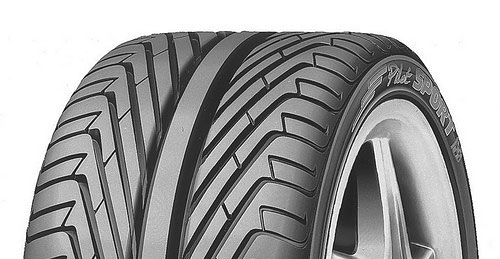
Directional tread pattern allows you to quickly remove water from the tire contact patch with the road and significantly reduces the risk of the float over the water (aquaplaning).
On tires with a directional pattern there must be a marking in the form of an arrow with the inscription Rotation, which indicates the correct direction of rotation of the wheel. Such wheels can not be moved from the right side of the car to the left without removing the tire from the drive. If you install the tire incorrectly, then in the rain the car will "float" even at a low speed.
Non-directional pattern

The non-directional tread pattern does not require any particular installation, since it is the most versatile. Such tires are the most affordable and, due to their versatility, are often installed on the plant's conveyor.
Asymmetrical tires
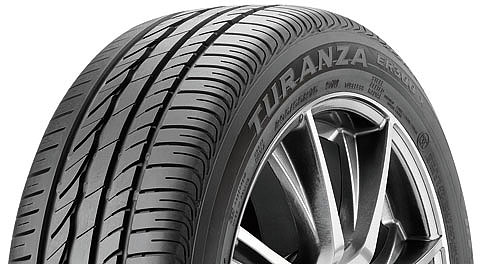
Asymmetric tires consist of two parts with different patterns, that is, the right part - "rain", the left - "dry". In such tires, the sidewall of the inner and outer sides has different rigidity. Since the outer side has a heavy load (especially in bends), different rigidity allows the asymmetric tire to better hold onto the road.
On asymmetrical rubber there is always a marking of Outside and Inside (or Side Facing Out and Side Facing Inwards), which points to the inner and outer sides of the tire. After correct installation, only the word "Outside" or "Side Facing Out" should be visible. Asymmetric tires can be either directional or non-directional tread pattern.
Low-profile tires
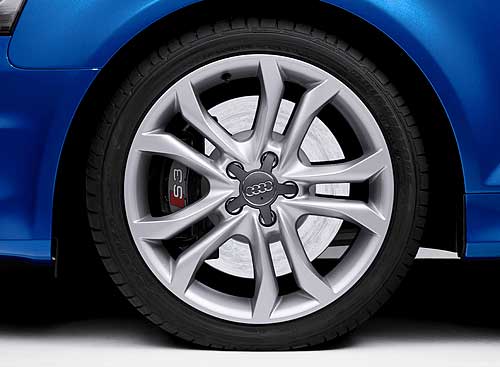
Drivers who prefer a dynamic driving style are very popular with low-profile tires. The ratio of the height of the profile to the width (series) on such a tire does not exceed 55% (195/55, 205/50, 225/45, etc.)
Low-profile tires improve the controllability of the car due to greater grip on the road. Allow to reduce the stopping distance and improve acceleration. But at the same time they have increased noise and rigidity and are more prone to aquaplaning.
In addition, such tires "love" only a flat road, as when hit on irregularities significantly increase the risk of damage to the drive. High curbs and impassability with such tires should be avoided.
Puncture-free tires
Every year in the world, the number of cars that are equipped with tires with Run Flat (Run on Flat) technology is increasing. Technology Run Flat allows you to drive on a punctured tire 100-150 km. At a speed of up to 80 km / h. In such tires, the reinforced sidewall is used, which does not allow it to deform even with complete loss of pressure.
Most actively promotes the new technology concern BMW, which serially equips this type of rubber most of its models, including models under the brand MINI.
Off-road tires

Fans of frequent sorties on serious impassability usually use off-road type of tires. Off-road tires feature a very high rubber profile and a deep, sparse tread pattern. This allows the tire to better bite off the road and climb the slopes.
But such tires are poorly adapted to travel at high speed on a flat road, since a deep protector does not hold the road well and is quickly erased. In addition, the braking distance of the car greatly increases.
Seasonal tires
One of the main differences between tires is their seasonality.
By seasonality tires are divided into: summer, winter and all-season. We do not wear sandals in winter, and in summer boots, as well as our cars should not drive in winter on summer tires and vice versa. It should be remembered that in winter, the car is shod, even in cheap winter tires, will go better than on the most expensive summer wheels.

The main task of the summer tire is to provide maximum grip of the tire to the road, and, accordingly, traffic safety. Summer tires have a high speed index and good wear resistance. But at an air temperature below +7 any summer tire starts to freeze (tan) and loses its coupling properties. This leads to a significant increase in the braking distance and a deterioration in handling. And then come to the rescue winter tires.

The composition of winter tires is softer and the tire does not "dube" in cold weather. The winter tire protector will be much softer than the summer tire. The main difference between a winter tire is a large number of slats - narrow slots in the tread pattern. Thanks to the lamellas, the wheel has good contact with the road, even on snow and ice. But on dry asphalt and at an air temperature above +9 winter tires begin to wear out very quickly. With the advent of spring, do not delay with the conversion to summer tires.

In addition, there are also studded winter tires, which are designed for severe winters. But to use such tires it is necessary, only in really difficult conditions. Thorns are banned in many European countries, as they damage the road surface. Moreover, modern expensive winter tires do a good job with snow even without thorns. In Ukraine, there is a sense to put spike rubber only if you travel to snow-covered regions with unclean roads, for example, to the Carpathians.
In especially difficult snow-covered areas, snow chains can come to help the winter tires, which must be carried with you when traveling through the same Carpathians. Snow chains are worn on wheels only for overcoming with a small speed (up to 40 km / h) a heavy section of the road.
All-season tires are a compromise solution for countries with very mild winter conditions. Roughly speaking, with such a tire, one half of the tread is winter, and the other is summer. They are inferior in quality to both summer and winter tires.
Marking
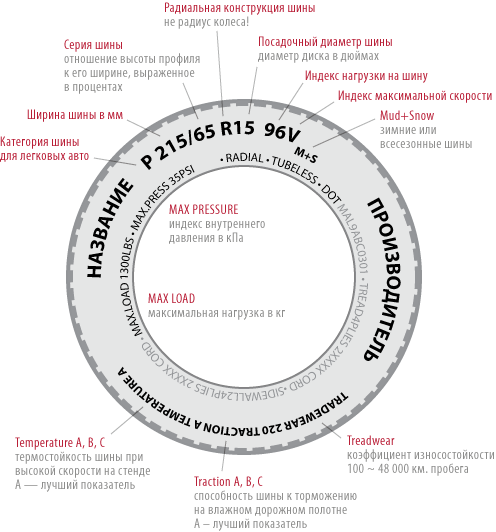
P195 / 55 R15 84 H - tire size
P - category tires for passenger cars.
195 - tire width in mm.
55 - tire series (the ratio of the height of the profile to its width, expressed as a percentage).
R is the radial construction of the tire (and not the radius of the wheel!).
15 - landing diameter of the tire (disk diameter).
84 - Bus load index is a symbol that corresponds to a certain maximum load in kg. See table.
:
| 60 ....... 250 |
74 ....... 375 |
88 ........ 560 |
102 ........ 850 |
116 ....... 1250 |
| 61 ....... 257 |
75 ....... 387 |
89 ........ 580 |
103 ........ 875 |
117 ....... 1285 |
| 62 ....... 265 |
76 ....... 400 |
90 ........ 600 |
104 ........ 900 |
118 ....... 1320 |
| 63 ....... 272 |
77 ....... 412 |
91 ........ 61 |
105 ........ 925 |
119 ....... 1360 |
| 64 ....... 280 |
78 ....... 425 |
92 ........ 630 |
106 ........ 950 |
120 ....... 1400 |
| 65 ....... 290 |
79 ....... 437 |
93 ........ 650 |
107 ........ 975 |
121 ....... 1450 |
| 66 ....... 300 |
80 ....... 450 |
94 ........ 670 |
108 ....... 1000 |
123 ....... 1500 |
| 67 ....... 307 |
81 ....... 462 |
95 ........ 690 |
109 ....... 1030 |
124 ....... 1550 |
| 68 ....... 315 |
82 ....... 475 |
96 ........ 710 |
110 ....... 1060 |
125 ....... 1600 |
| 69 ....... 325 |
83 ....... 487 |
97 ........ 730 |
111 ....... 1090 |
126 ....... 1650 |
| 70 ....... 335 |
84 ....... 500 |
98 ........ 750 |
112 ....... 1120 |
127 ....... 1700 |
| 71 ....... 345 |
85 ....... 515 |
99 ........ 775 |
113 ....... 1150 |
128 ....... 1750 |
| 72 ....... 355 |
86 ....... 530 |
100 ....... 800 |
114 ....... 1180 |
129 ....... 1800 |
| 73 ....... 365 |
87 ....... 545 |
101 ....... 825 |
115 ....... 1215 |
130 ....... 1850 |
H - The maximum speed index is a symbol that corresponds to a certain maximum speed. See table. :
| N ... 140 |
U ... 200 |
| P ... 150 |
H ... 210 |
| Q ... 160 |
V ... 240 |
| R ... 170 |
W ... 270 |
| S ... 180 |
Y ... 300 |
| T ... 190 |
ZR ... more than 240 |
The tire model is Pilot, Potenza.
Trademark - Toyo, Dunlop.
Trademark of the enterprise
Name of the country of manufacture
The manufacturing date is four digits in the oval, the first two digits the manufacturing week, the next two years of manufacture (1808 = April 2008).
Conditional symbols on tires
MAX PRESSURE (internal pressure index) is the maximum permissible tire pressure, in kPa.
MAX LOAD (maximum load) - values in kg.
REINFORCED - reinforced bus or tire with increased bearing capacity.
TUBE TYRE - chamber tire.
TUBELESS - tubeless tire.
REGROOVABLE - the possibility of deepening the tread pattern by cutting.
ALL STEEL - for tires with a metal cord belt and frame.
RADIAL is a radial tire.
E - approval mark of the certificate of compliance with the UNECE Regulations.
TWI, DSI or other symbol indicating the location of the wear indicators.
M & S (Mud + Snow - dirt plus snow) - winter or all-season tires.
All Season - all-season tire, designed for year-round use.
Rotation - Directional tire, the direction of rotation of which is indicated by an additional arrow (do not confuse this arrow with the logo on the tires of the company Dunlop).
Outside and Inside (or Side Facing Out and Side Facing Inwards) - asymmetrical tires, when installing which you must strictly follow the rule of installing the tire on the disk.
Left or Right - means that the buses of this model are left and right. When installing them, you must strictly observe the rule of installing the tires on the car, the left - to the left, the right - to the right.
RAIN, WATER, AQUA (or umbrella symbol) - means that these tires are specially designed for rainy weather and have a high degree of protection against aquaplaning.
E (in a circle) - the tire complies with the European requirements ECE (Economic Commission for Europe)
DOT - compliance with US safety standards.
Temperature A, B, C - the temperature resistance of the tire at high speed at the stand. (A is the best indicator).
Traction A, B, C - the ability of the tire to braking on a wet roadway (A - the best figure).
Treadwear - coefficient of wear resistance (the coefficient of 100 is approximately equal to 48 thousand km of run)
Operation and storage of tires
Be sure to observe the necessary internal pressure in the tire and check it every two weeks. The pressure should coincide with the norm specified in the instruction manual of your car, also this norm is often duplicated on the inner cover of the fuel filler flap. Check the pressure only in the "cold" bus, that is, before the trip, and not after it.
In addition, check the appearance of the tire, on the sidewall of the tire there should be no cuts, blisters (hernias), cracks. Observe the wear of the tread, its depth according to the SDA should be at least 1.6 mm. But it is advisable to change tires at a depth of 2 mm., And winter tires should be changed already at 4 mm.
Each has a wear indicator, which is a jumper between the grooves of the tread or digits showing the remaining depth in mm. The place where this indicator is located is shown by the symbols "TWI", "DSI". The company Michelin on the indicator indicates the company logo (Bibendum) or a snowflake (on winter tires).
Store tires in a cool (from +10 to +25 C), dry and darkened room. Near to them there should be no gasoline or any chemical substances. After dismantling the tires, do not forget to write on the wheels the place of their installation (front right, rear left), in order to subsequently return each wheel to its place.
Tires without discs must be stored only in an upright position, they can not be stacked or hanged. In addition, about once a month the tires need to be rotated a little, so that the load point is not constantly in one place.
Tires on disks should be stored in a suspended or horizontal (lying) position, that is, they can not be placed vertically.
The most ideal way to store tires is to rent them in companies that offer seasonal storage of wheels. There tires will be in a specially equipped room and stored according to all the rules. It's convenient and practical.
A difficult choice
Bus technology does not stand still. Still some 10 years ago it would be difficult to imagine that even with a completely broken tire, you can safely continue driving, not particularly shedding speed. Or, that on winter studless rubber it is possible to move confidently enough on snow or ice.
A tire is not an easy piece of rubber, wound on a disk. This is a high-tech product, on the quality of which your life can depend.
Carefully choose new tires for your "iron" horse, the good today really is what to choose from. Be sure to follow the rules of installation and operation of tires, do not neglect their seasonal change, and your wheels will hold on to the road with all their might.

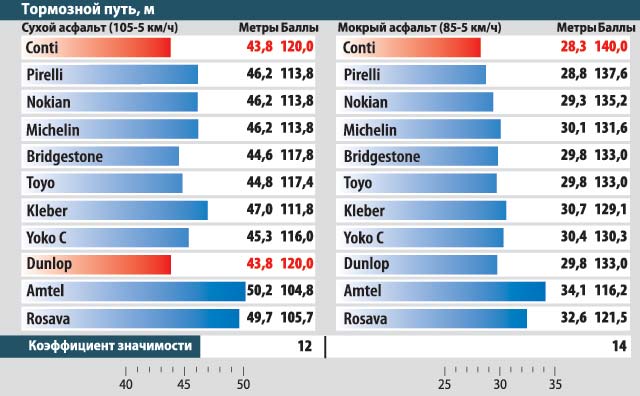

Comments
Commenting on, remember that the content and tone of your message can hurt the feelings of real people, show respect and tolerance to your interlocutors even if you do not share their opinion, your behavior in the conditions of freedom of expression and anonymity provided by the Internet, changes Not only virtual, but also the real world. All comments are hidden from the index, spam is controlled.